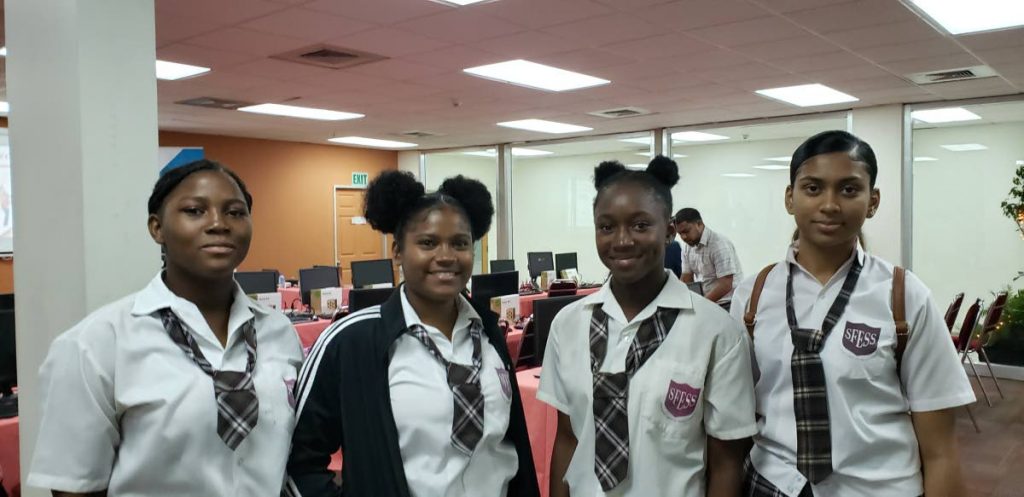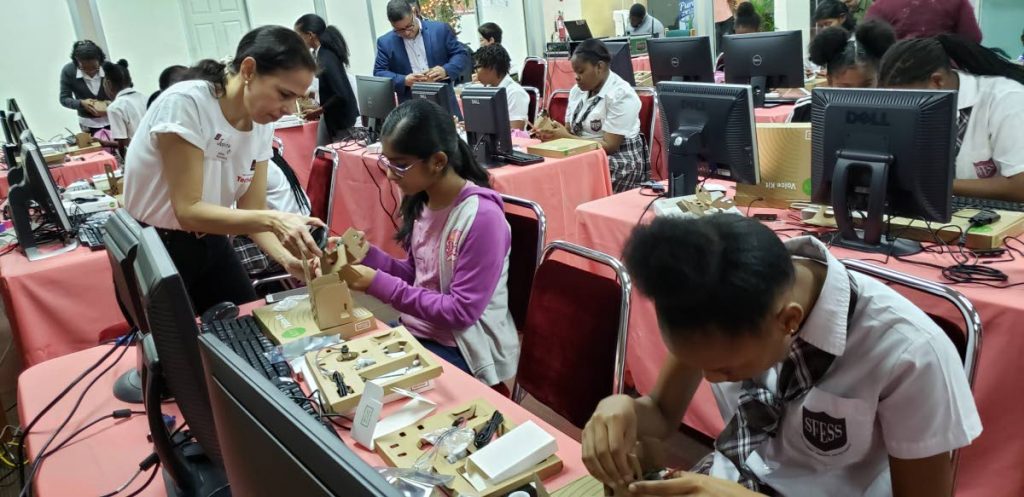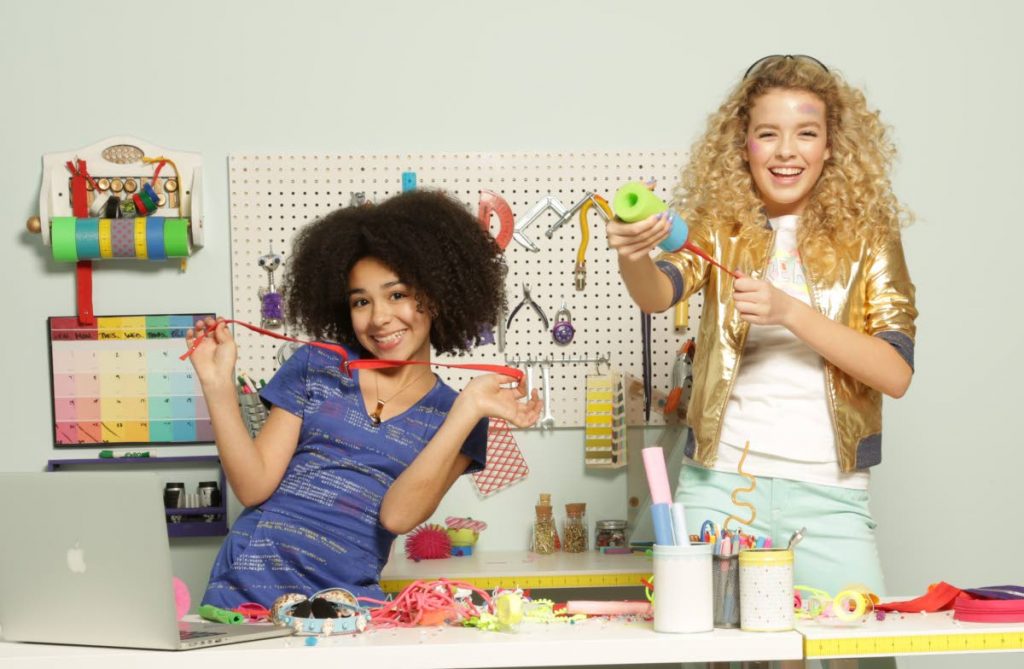Science is the new pink

GIRLS are historically under represented in the science fields. Less than one in five tech jobs are currently held by women, said a Global System for Mobile Communications Association fact sheet.
In a time where the world is rapidly producing digital innovations, the US Bureau of Labour Statistics predicts that technology professionals will experience the highest growth in job numbers in the upcoming decade. However, only a fraction of girls and women have been pursuing degrees in fields such as science, technology, engineering and mathematics (STEM).
But why is that?
On April 25, the world commemorated Girls in ICT Day where a focus was put on encouraging girls to consider becoming scientists and reflect on why there is a gender disparity in the STEM field.
Companies such as the Telecommunications Authority of TT (TATT) and Caribbean Association of National Telecommunications Organizations (CANTO) hosted events to encourage girls in ICT.
For two days, TATT and CANTO hosted over 50 female students from San Fernando East Secondary School and San Fernando Central Secondary School at the TATT head office in Barataria for their Tech Savvy Girls event.
There, they had form four and form three secondary school girls learn how to build and programme a Google AIY (artificial intelligence yourself) Voice Kit. The girls learned how to build, use JASON – a JavaScript code – and connect it to the Google Cloud.
This was part of the Global System for Mobile Communications Association (GSMA) Tech4Girls programme where the company exposes girls to female role models and mentors in the mobile sector. Their aim is to reduce the persistent gender gap in the mobility industry.
The girls were shown how to programme their voice-activated speaker by female computer scientists such as Judith Azcunes, project manager for technology from North America's GSMA; Candace Inglesbirth, information technology (IT) graduate trainee at TATT, who holds a BSc in Computer Science and Management and an MSc in ICT Systems; and Abigail Rambarran and Shania Joseph, software engineering students from the University of Trinidad and Tobago (UTT).
There the girls got to ask the female computer scientists questions about coding, how to build the device and what it is like to be a computer scientist.

Newsday spoke to some of the girls from San Fernando East Secondary School who attended a workshop.
Clarese Narine, 15, wants to be an accountant. She is a form four student who chose to do information technology for Caribbean Secondary Education Certificate (CSEC). Though she does not want to pursue a career in STEM, she is aware that during her entire career she would be using computers and thought it was important to learn.
Princess Foster, 14, wants to be a lawyer. She is excited about learning how to code because she also wants to study technical drawing to become an architect. She said with both law and architecture, computers are necessary to sort through information and design.
Kimberly Cedeno, 15, wants to be a fashion designer. She said she was excited to learn about IT because it will allow her to design clothes on the computer.
Kofis Ogle, 15, is interested in ICT subjects. Though she wants to be a criminologist, because her father is a computer engineer, she wants to do work with him on the side. She is excited about bringing home her Google Voice Kit to show her father what she built.
"IT is something that runs in the family. My dad is a computer engineer. I would like to come back and say dad I learned this at this event for girls, and I want to be like you," she said.
Though the girls were excited to learn about coding, none of them said they wanted a STEM job to be their primary career. Only Ogle, who has a computer engineer in the family, considered a secondary STEM career.

A study conducted by the Girl Scout Research Institute showed that although interest in STEM is high, few girls consider it their first career choice. Of the girls interested in STEM, 81 per cent expressed interest in pursuing a STEM career, but only 13 per cent of them said it is their first choice.
While interventions such as Tech4Girls is important to inspire, discover and nurture girls interest in STEM, could it be that adolescent intervention is too late?
At TATT's Tech Savvy Girls, the Google AIY Voice Kits were cased in a brown cardboard, but the organisers provided pink and purple power adapters (block) to add a touch of girly colour to project.
Many girls like pink, and there's nothing wrong with that. For decades marketing campaigns have pushed the colours pink for girls and blue for boys in order to increase sales. Girls have been told to like pink.
Amy Ogata, Professor of Art History at the University of South California said: "corporate marketers promoted colour-based distinction between boys' and girls' clothing to prevent parents handing down clothes and toys to children of the different sex to increase profits."
Toys that develop curiosity in STEM include building blocks, chemistry sets and dinosaur figures. However, toys that help improve spatial skills – skills necessary to develop STEM skills – are almost exclusively marketed towards boys.
The journal article Building Blocks for developing spatial skills said: Evidence from a large, representative US sample by Rhodes College's Jamie Jirout and Temple University's Nora Newcombe, "There is evidence suggesting that children’s play with spatial toys (eg, puzzles and blocks) correlates with spatial development. Females play less with spatial toys than do males, which arguably accounts for males’ spatial advantages."
Spatial thinking is important for fostering interest in STEM subjects. Newcomb's research shows, "There is growing evidence that strong spatial reasoning skills in preschool help support math learning in elementary school."
Marcus Kissoon, a gender researcher with the Institute of Gender and Development Studies (IGDS) has spent years advocating the importance of play for children's cognitive development. He told Newsday via an online interview that toys become another barrier and policing system for gender roles and limit the development of children.
"Toys become gendered and very much socialised and have gender implications on understanding one's gender identity. Spending many years working with kids and young people, from observation in the playground and schoolyard, toys and Caribbean games are very much gendered. I believe toys have become yet another medium for gender learning and socialisations," he said.
To rectify the STEM play gap, some toys are being designed to be specifically for girls. GoldieBlox is one such toy designed by Debbie Sterling, a Stanford educated engineer who wanted more than dolls to play with as a child. GoldieBlox is a construction toy and storybook that tells the adventures of girl engineer Goldie and her friends – the Goldie Squad.

To market the game, GoldieBlox has a YouTube channel with a real GoldieBlox character who introduces herself as an engineer, calls her followers hackers and tells girls they could be engineers too.
If one were to Google the word girly, the first result would describe the word as derogatory. Goldie looks like a typical girly-girl who celebrates unicorns, fashion and all things pink and beautiful, and that does not stop her from doing work as an engineer – because loving pink and being girly is not prohibitive from learning science.


Comments
"Science is the new pink"